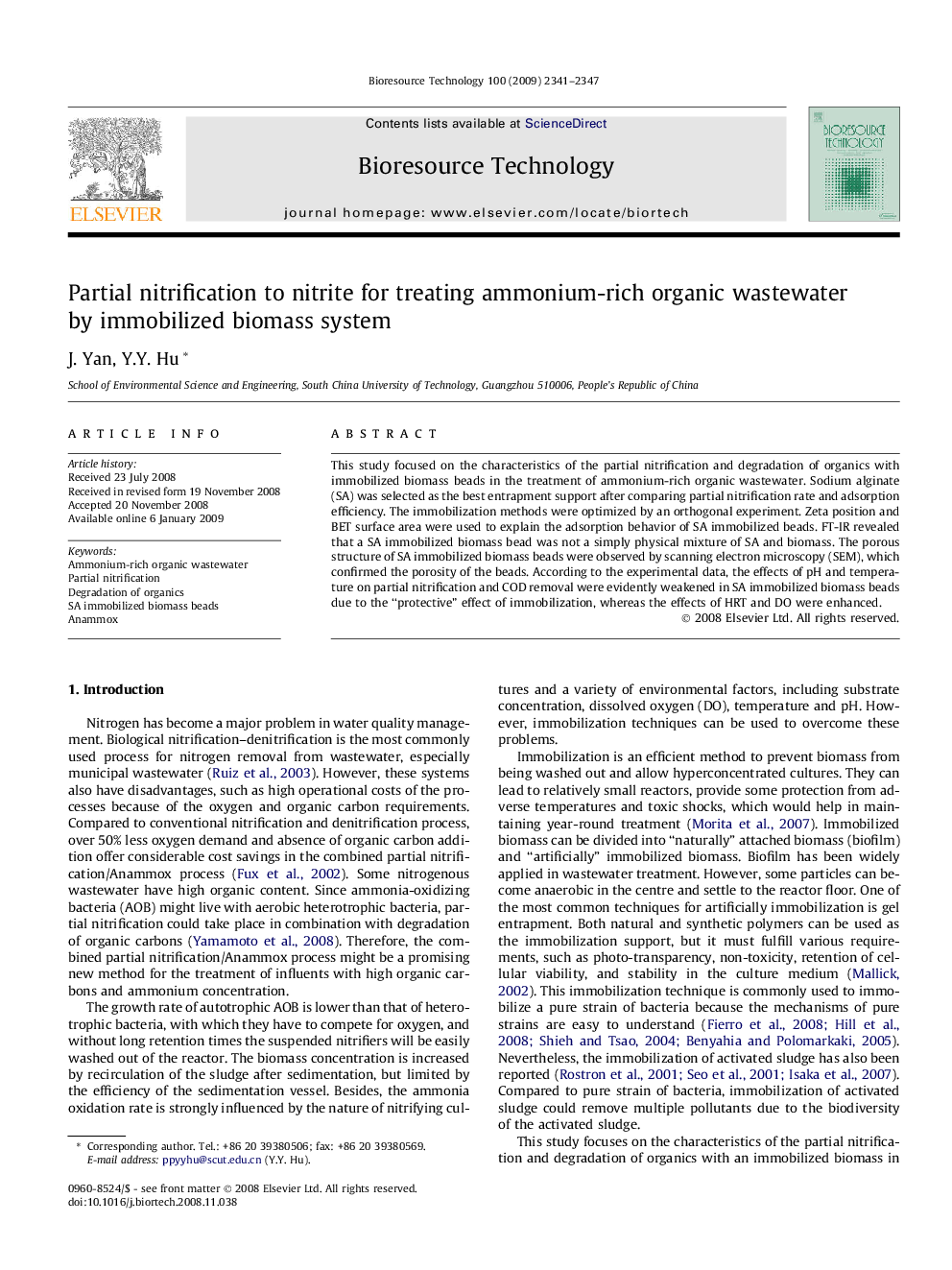| Article ID | Journal | Published Year | Pages | File Type |
|---|---|---|---|---|
| 683807 | Bioresource Technology | 2009 | 7 Pages |
This study focused on the characteristics of the partial nitrification and degradation of organics with immobilized biomass beads in the treatment of ammonium-rich organic wastewater. Sodium alginate (SA) was selected as the best entrapment support after comparing partial nitrification rate and adsorption efficiency. The immobilization methods were optimized by an orthogonal experiment. Zeta position and BET surface area were used to explain the adsorption behavior of SA immobilized beads. FT-IR revealed that a SA immobilized biomass bead was not a simply physical mixture of SA and biomass. The porous structure of SA immobilized biomass beads were observed by scanning electron microscopy (SEM), which confirmed the porosity of the beads. According to the experimental data, the effects of pH and temperature on partial nitrification and COD removal were evidently weakened in SA immobilized biomass beads due to the “protective” effect of immobilization, whereas the effects of HRT and DO were enhanced.
